7.11.2024
China Focus: Taikonauts to conduct in-orbit experiments on fruit flies
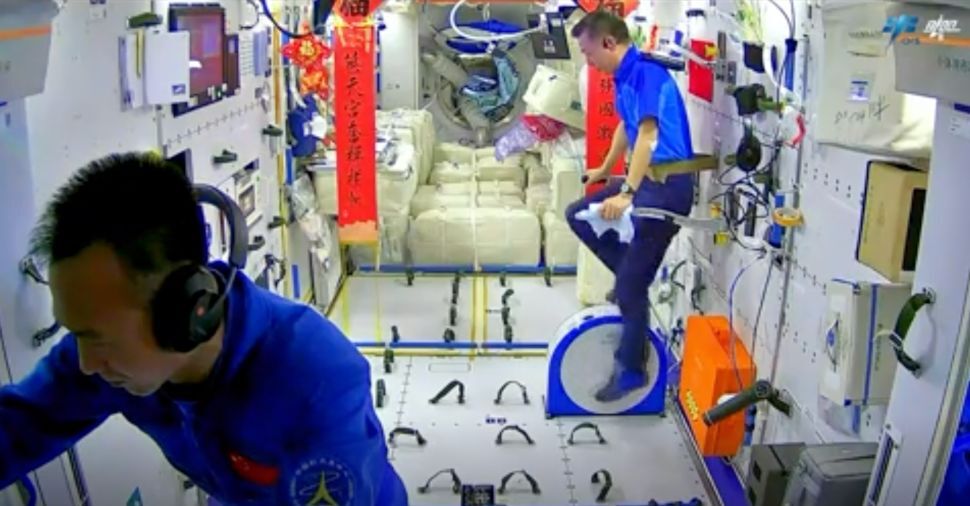
The newly launched Shenzhou-19 taikonauts have embarked on their six-month journey aboard China's space station. Their packed schedule includes 86 sci-tech experiments, with a particularly intriguing one - the fruit fly research, aimed at studying the growth and behaviors of these insects at a distance of 400 km above Earth.
The fruit fly is one of the model species frequently used in genetic experiments. It is small, measuring only 3 to 4 mm in length, and has a short life cycle with fast reproduction capabilities, enabling it to produce a large number of offspring within a short period, according to Zhang Wei, a researcher involved in the selection of in-orbit scientific experiments, at the Technology and Engineering Center for Space Utilization under the Chinese Academy of Sciences.
"The genes of fruit flies share many similarities with those of humans, so the study can help with understanding human genetic diseases and provide insights into how humans adapt to space environments," Zhang said in a recent interview.
He also noted that future space research plans will involve conducting experiments on mice, which are more complex life forms compared to fruit flies.
"We have planned to send mice to space for breeding on an animal platform. And some lab mice in space may be brought back to Earth for further study, which will focus on their nerves, bones, muscles and immunity," the researcher added.
This is the first time that China has taken the small insects into space, and the aim of the study seems to be exploring the deeper universe.
According to scientists, Earth provides a magnetic field as a basic guarantee for our daily lives, but Mars does not possess similar strong magnetic protection and the moon has none at all. Understanding how the human body responds to such an environment remains a major challenge in space exploration.
"So we have to conduct relevant research in advance, creating a sub-magnetic environment and observing how the fruit flies develop, grow and behave," Zhang said.
China launched the Shenzhou-19 (Magical Ship) crewed spaceship on Oct. 30, sending three taikonauts, two male and one female, to its orbiting space station Tiangong (Heavenly Palace) for a half-year stay. The trio in mid-November will witness the arrival of Tianzhou-8 (Sky Ship) cargo craft, which will send up supplies and experiment payloads, including the sub-magnetic facility with fruit flies, according to the researcher.
The previous Shenzhou-18 crew during their six-month mission also performed numerous experiments inside the national space lab, and one task was creating an "aquarium" and raising four zebra fish and four grams of goldfish algae in zero gravity, a breakthrough in the field of raising vertebrates in space.
Not only the taikonauts found joy in the space "aquarium," but it also paved the way for their future counterparts to enjoy nutritious fish from their own in-orbit harvests.
According to scientists, the water, fish eggs and other experimental samples obtained through the space "aquarium" have been brought back to Earth with the crew on Monday. These samples will provide valuable data for scientists to study vertebrate lives.
Besides life science experiments, the orbiting taikonauts will carry out research on materials, including rare earth soft magnetic materials, blade materials for gas turbines and special functional crystals. These findings will provide insights for developing advanced instruments on Earth.
Quelle: Xinhua
----
Update: 11.11.2024
.
China's Tianzhou-7 cargo craft separates from space station combination
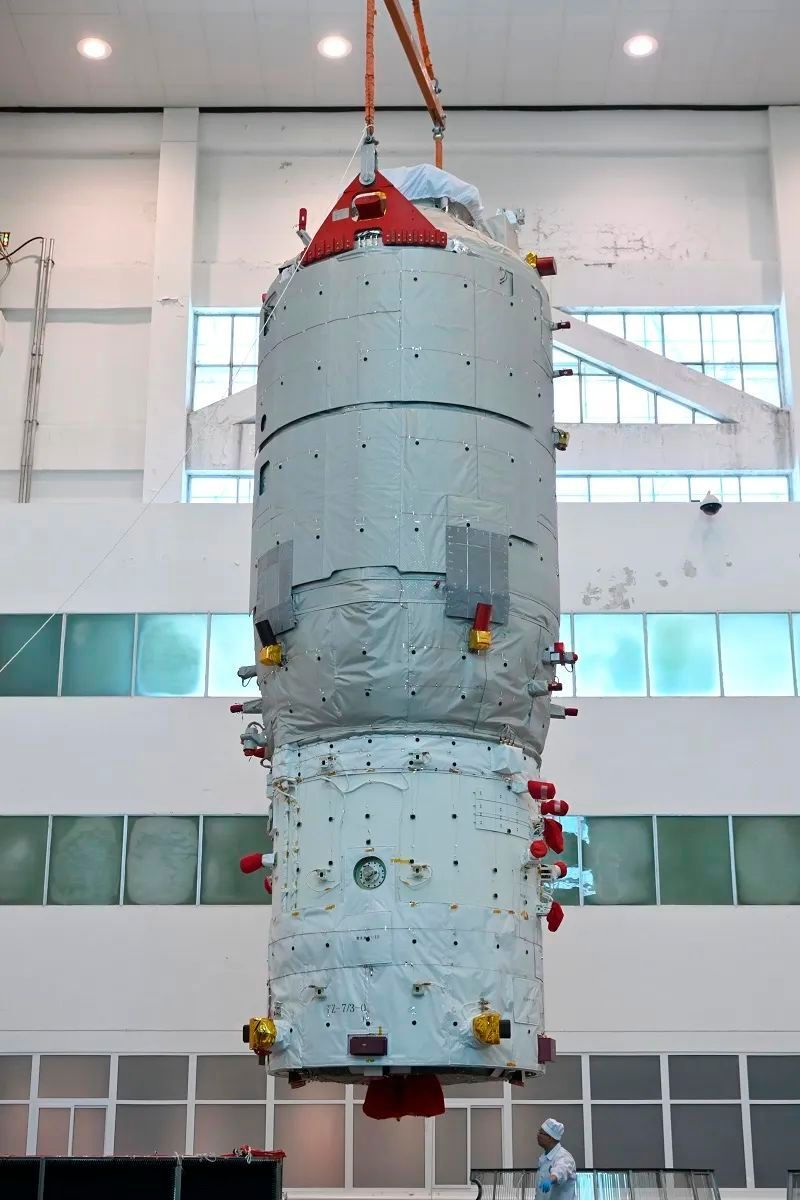
The Tianzhou-7 cargo craft, tasked with carrying supplies for China's space station, separated from the station combination at 4:30 p.m. Sunday (Beijing Time) and switched to independent flight, according to the China Manned Space Agency (CMSA).
The cargo craft will re-enter the Earth's atmosphere in a controlled manner soon. Most of its components will burn up and be destroyed during the process, while a small amount of debris will fall into designated safe waters in the South Pacific, the CMSA said.
The CMSA has planned a total of two cargo supply missions in 2024, including Tianzhou-7 and Tianzhou-8.
Tianzhou-7 was launched on Jan. 17 from the Wenchang Spacecraft Launch Site in the southern island province of Hainan. Tianzhou-8 has been rescheduled for mid-November due to the impact of Super Typhoon Yagi on Wenchang.
Quelle: Xinhua
----
Update: 17.11.2024
.
Shenzhou-19 crew receive delivery from Earth
China's Shenzhou-19 crew aboard the orbiting Tiangong space station received a shipment of supplies from Earth on Saturday, after the Tianzhou-8 cargo spacecraft successfully docked with the space station.
At 8:26 a.m., astronaut Cai Xuzhe opened the hatch of Tianzhou-8 and entered the cargo ship.
Tianzhou-8 carried approximately six tonnes of materials, including consumables for the astronauts' in-orbit residency, propellants, experiment equipment, and over 400 kilograms of scientific research supplies.
The Shenzhou-19 crew will proceed with cargo transfer and other related tasks as planned.
China launched Tianzhou-8 on Friday night to deliver supplies to its orbiting Tiangong space station. About three hours later, the cargo craft successfully docked with the space station.
Quelle: Xinhua
+++
China's cargo craft Tianzhou-8 docks with space station Tiangong
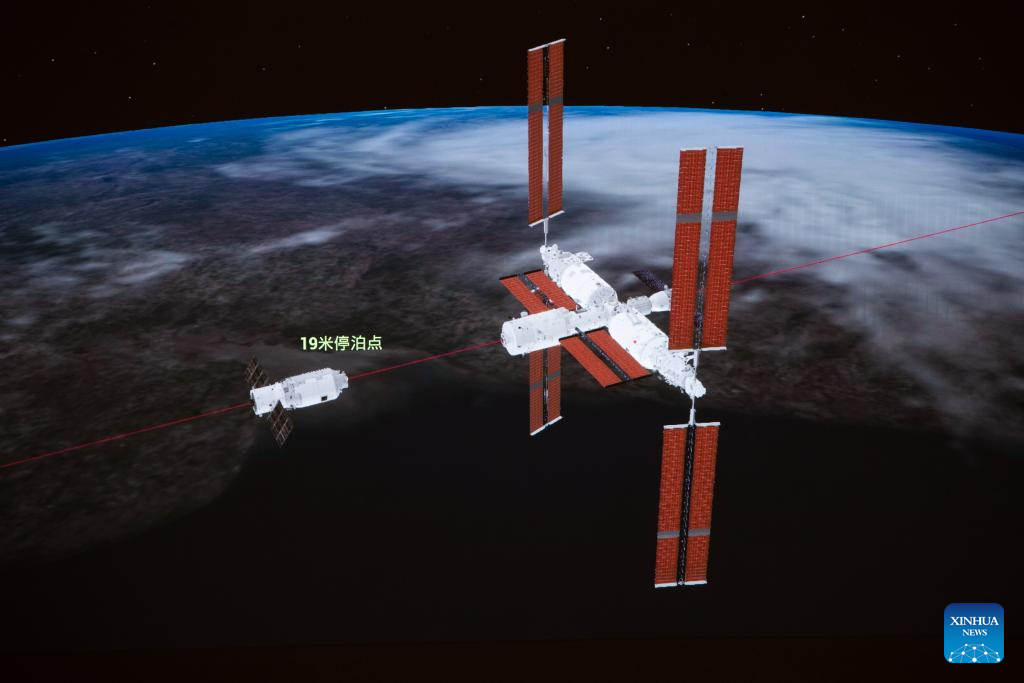
This simulated image captured at the Beijing Aerospace Control Center on Nov. 16, 2024 shows China's cargo spacecraft Tianzhou-8 docking with the orbiting Tiangong space station. The cargo craft Tianzhou-8 has successfully docked with the orbiting Tiangong space station on Saturday, the China Manned Space Agency announced. At 2:32 a.m. (Beijing Time), Tianzhou-8 docked at the rear docking port of Tianhe, the core module of Tiangong space station, after completing its status setting, according to the agency. The Shenzhou-19 taikonauts onboard the space station will enter the cargo craft and transfer the payloads as per schedule. (Photo by Han Qiyang/Xinhua)
The cargo craft Tianzhou-8 has successfully docked with the orbiting Tiangong space station on Saturday, the China Manned Space Agency announced.
At 2:32 a.m. (Beijing Time), Tianzhou-8 docked at the rear docking port of Tianhe, the core module of Tiangong space station, after completing its status setting, according to the agency.
The Shenzhou-19 taikonauts onboard the space station will enter the cargo craft and transfer the payloads as per schedule.

This image captured at the Beijing Aerospace Control Center on Nov. 16, 2024 shows China's cargo spacecraft Tianzhou-8 completing its docking with the orbiting Tiangong space station.
The cargo craft Tianzhou-8 has successfully docked with the orbiting Tiangong space station on Saturday, the China Manned Space Agency announced.
At 2:32 a.m. (Beijing Time), Tianzhou-8 docked at the rear docking port of Tianhe, the core module of Tiangong space station, after completing its status setting, according to the agency.
The Shenzhou-19 taikonauts onboard the space station will enter the cargo craft and transfer the payloads as per schedule. (Photo by Han Qiyang/Xinhua)

This image captured at the Beijing Aerospace Control Center on Nov. 16, 2024 shows China's cargo spacecraft Tianzhou-8 approaching the orbiting Tiangong space station.
The cargo craft Tianzhou-8 has successfully docked with the orbiting Tiangong space station on Saturday, the China Manned Space Agency announced.
At 2:32 a.m. (Beijing Time), Tianzhou-8 docked at the rear docking port of Tianhe, the core module of Tiangong space station, after completing its status setting, according to the agency.
The Shenzhou-19 taikonauts onboard the space station will enter the cargo craft and transfer the payloads as per schedule. (Photo by Han Qiyang/Xinhua)
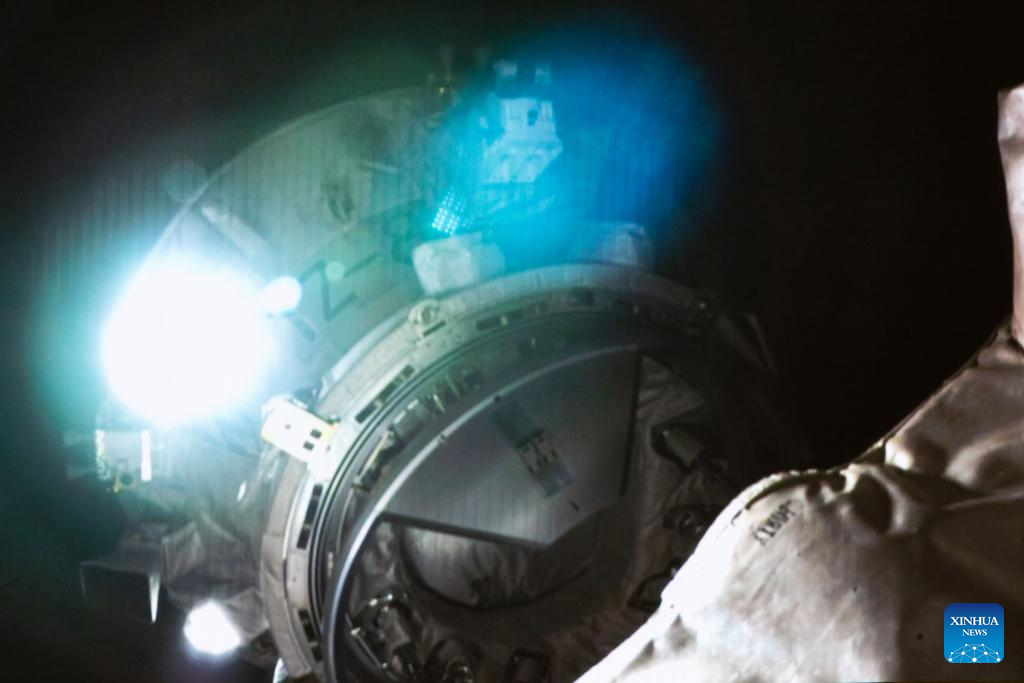
This image captured at the Beijing Aerospace Control Center on Nov. 16, 2024 shows China's cargo spacecraft Tianzhou-8 approaching the orbiting Tiangong space station.
The cargo craft Tianzhou-8 has successfully docked with the orbiting Tiangong space station on Saturday, the China Manned Space Agency announced.
At 2:32 a.m. (Beijing Time), Tianzhou-8 docked at the rear docking port of Tianhe, the core module of Tiangong space station, after completing its status setting, according to the agency.
The Shenzhou-19 taikonauts onboard the space station will enter the cargo craft and transfer the payloads as per schedule. (Photo by Han Qiyang/Xinhua)
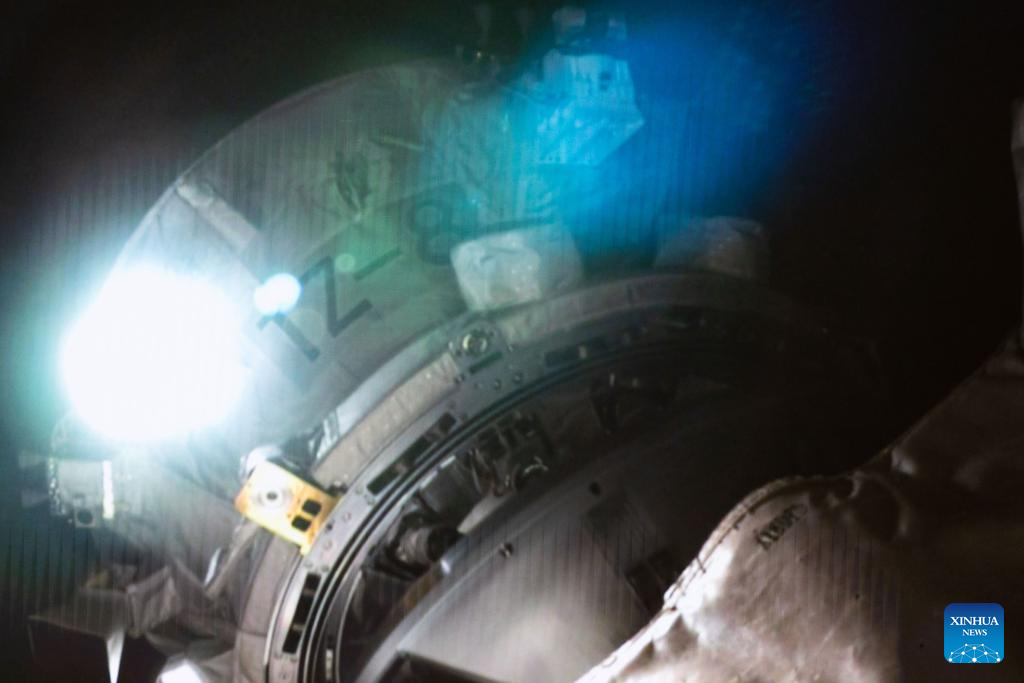
This image captured at the Beijing Aerospace Control Center on Nov. 16, 2024 shows China's cargo spacecraft Tianzhou-8 approaching the orbiting Tiangong space station.
The cargo craft Tianzhou-8 has successfully docked with the orbiting Tiangong space station on Saturday, the China Manned Space Agency announced.
At 2:32 a.m. (Beijing Time), Tianzhou-8 docked at the rear docking port of Tianhe, the core module of Tiangong space station, after completing its status setting, according to the agency.
The Shenzhou-19 taikonauts onboard the space station will enter the cargo craft and transfer the payloads as per schedule. (Photo by Han Qiyang/Xinhua)
Quelle: Xinhua
----
Update: 18.12.2024
.
Shenzhou-19 crew set for maiden extravehicular activities
The Shenzhou-19 crew members, who are currently on board China's space station, will conduct their first extravehicular activities (EVAs) within the next few days, the China Manned Space Agency (CMSA) announced on Monday.
Over the past 48 days, the astronauts have accomplished a rotation with the Shenzhou-18 crew, attended to the maintenance and upkeep of the space station platform, ensured the upkeep of the life and health support system, conducted inspections and tests on EVA suits, and prepared for the spacewalk.
The CMSA noted that the crew has participated in system-wide pressure emergency drills, medical rescue exercises and other in-orbit training programs, while also carrying out an array of space science experiments.
The agency confirmed that the Shenzhou-19 crew is in good health and the space station is operating smoothly, providing optimal conditions for conducting EVAs.
Quelle: Xinhua
----
Update: 19.12.2024
.
Shenzhou-19 crew completes first extravehicular activities
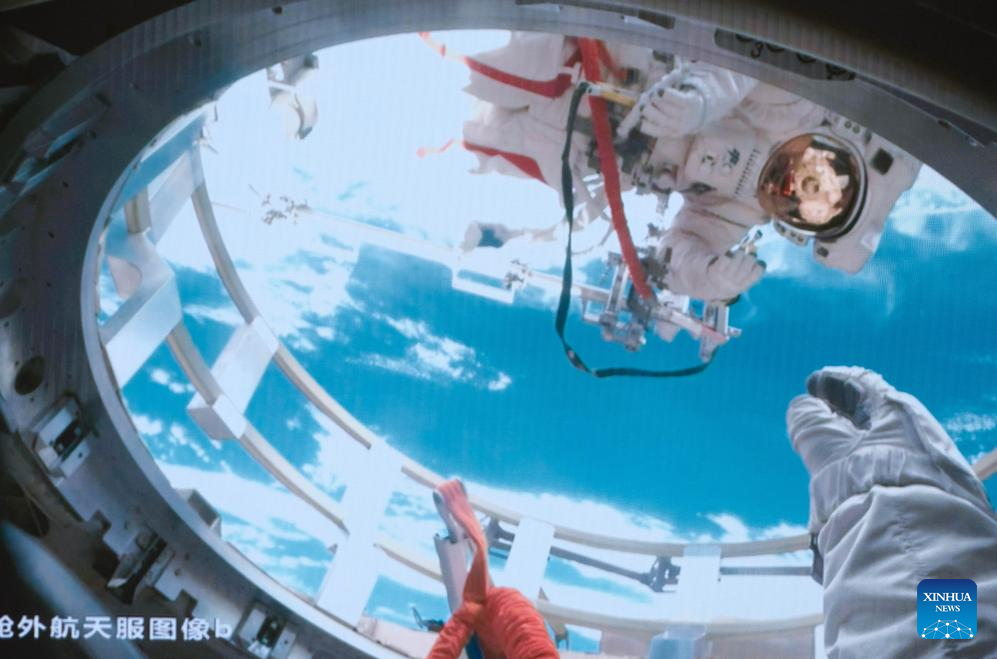
This screen image captured at Beijing Aerospace Control Center on Dec. 17, 2024 shows Shenzhou-19 astronaut Cai Xuzhe (above) and Song Lingdong (below) working outside and inside the airlock cabin of China's orbiting space station. (Xinhua/Li Jie)
Shenzhou-19 crew members aboard China's orbiting space station completed the first extravehicular activities (EVAs) of their mission at 9:57 p.m. (Beijing Time) on Tuesday, according to the China Manned Space Agency (CMSA).
Cai Xuzhe, Song Lingdong and Wang Haoze, worked for nine hours on completing multiple tasks, including the installation of space-debris protection devices. They were assisted by the space station's robotic arm and a team on Earth.
Cai and Song, the two crew members assigned the EVA duty, have since returned safely to the Wentian lab module.
The mission of the first extravehicular activities of the Shenzhou-19 crew was a complete success, setting a new record for the duration of extravehicular activities by Chinese astronauts, said the CMSA.
It marked Cai's second EVAs in space, following his initial EVAs during the Shenzhou-14 mission two years ago. Song became the first Chinese astronaut born after 1990 to carry out EVAs, said the agency.
The Shenzhou-19 crew is set to carry out a slew of scheduled space-science experiments and technical tests, while they will also undertake additional extravehicular activities and install payloads outside the space station, the agency added.
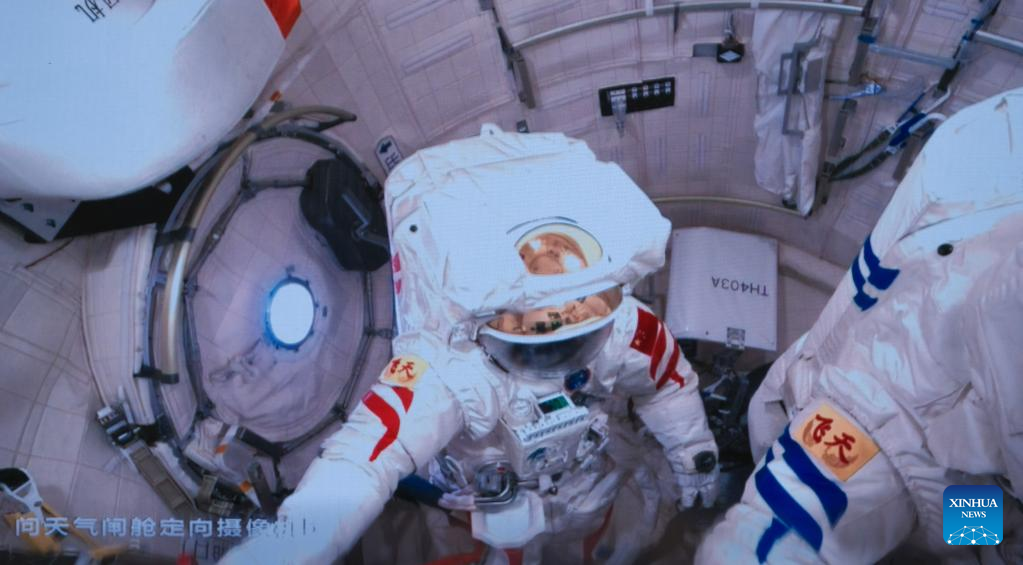
This screen image captured at Beijing Aerospace Control Center on Dec. 17, 2024 shows Shenzhou-19 astronauts preparing for extravehicular activities. (Xinhua/Li Jie)
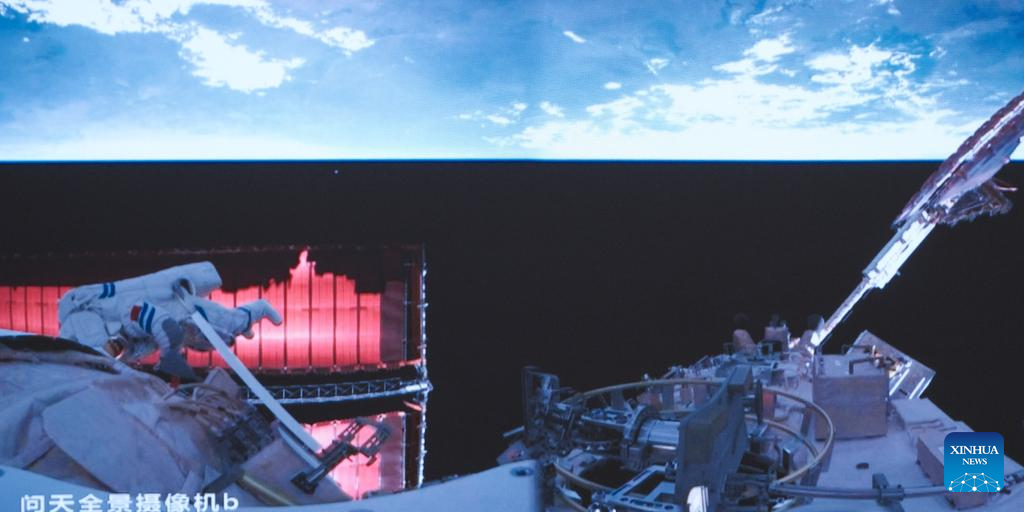
This screen image captured at Beijing Aerospace Control Center on Dec. 17, 2024 shows Shenzhou-19 astronaut Song Lingdong performing extravehicular activities outside China's orbiting space station. (Xinhua/Li Jie)
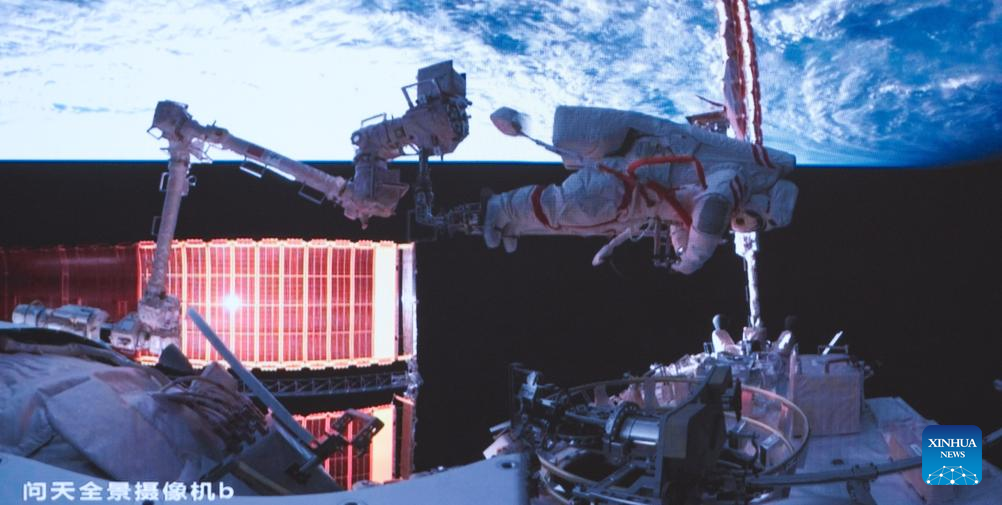
This screen image captured at Beijing Aerospace Control Center on Dec. 17, 2024 shows Shenzhou-19 astronaut Cai Xuzhe performing extravehicular activities outside China's orbiting space station. (Xinhua/Li Jie)
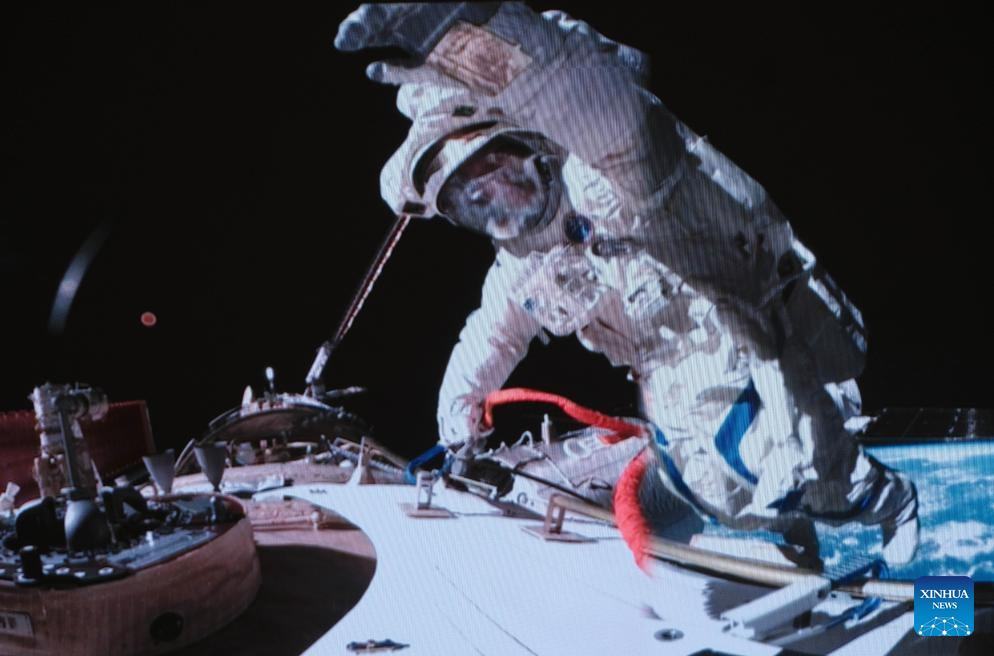
This screen image captured at Beijing Aerospace Control Center on Dec. 17, 2024 shows Shenzhou-19 astronaut Song Lingdong waving his hand during extravehicular activities outside China's orbiting space station. (Xinhua/Li Jie)
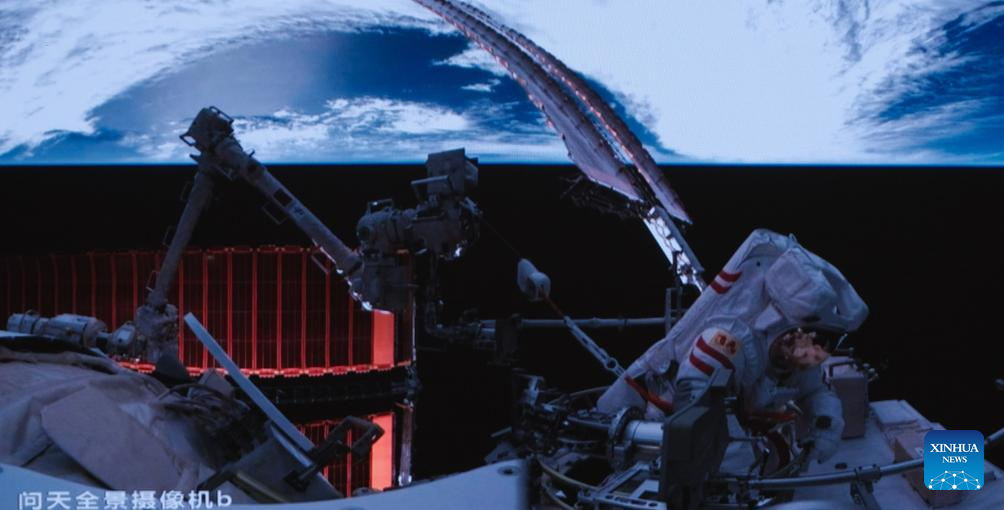
This screen image captured at Beijing Aerospace Control Center on Dec. 17, 2024 shows Shenzhou-19 astronaut Cai Xuzhe leaving China's orbiting space station for extravehicular activities. (Xinhua/Li Jie)
Quelle: Xinhua
----
Update: 15.01.2025
.
China Focus: Shenzhou-19 astronauts on space station conduct new experiments
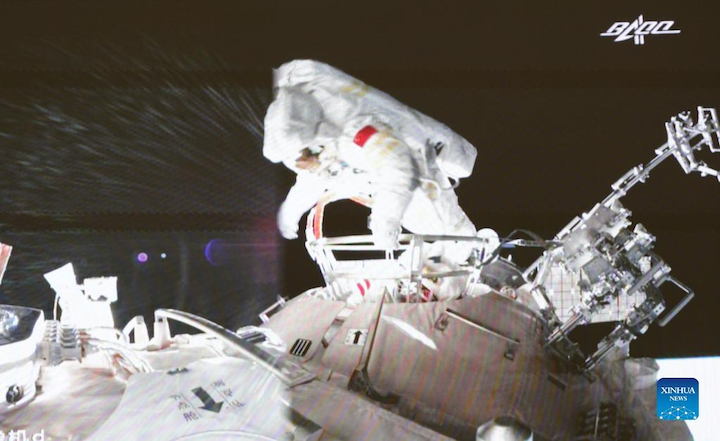
China's Shenzhou-19 crew aboard the orbiting Tiangong space station has carried out a variety of experiments since the beginning of 2025, including a test on a pipeline inspection robot, according to the China Manned Space Agency (CMSA).
The astronauts placed the robot inside a simulated pipeline, powered it up and pressed the task button to activate the robot. After completing the inspection, the robot returned to the pipeline entrance, where it was retrieved by the astronauts.
The experiment validated key technologies, including the robot's design for adapting to various complex pipelines and multi-stage coordinated full-body motion control in challenging pipeline environments, laying a solid technical foundation for automated pipeline inspection on the space station, the CMSA said.
Meanwhile, in conducting space medicine experiments, the crew has used electroencephalography equipment and software to carry out a number of tests.
Data collected will help ground-based researchers explore areas such as the impact of gravity on visual motion processing and the effects of brainwave music intervention on regulating inhibitory control functions during long-duration space flights, according to the CMSA.
The team has employed various devices to collect data on plantar pressure and joint kinematics, and obtain motion images of running and resistance exercises under different loads -- revealing the relationships between motion parameters and plantar pressure.
In addition, astronauts have worn devices that track their movements and heart rates, while also filling out sleep quality surveys weekly to explore how the space environment impacts the human circadian rhythm.
The crew, in collaboration with ground-based researchers, has conducted a system-wide pressure emergency drill, which simulated the entire process of emergency response in the event of internal pressure loss on the space station.
This drill improved the astronauts' skills in dealing with emergencies and enhanced coordination between the space and ground teams, the CMSA said.
China launched the Shenzhou-19 crewed spaceship on Oct. 30 last year, sending three astronauts, Cai Xuzhe, Song Lingdong and Wang Haoze, to its orbiting space station for a six-month mission.
Quelle: Xinhua
----
Update: 16.01.2025
,
China Focus: More zebrafish to swim in China's space station
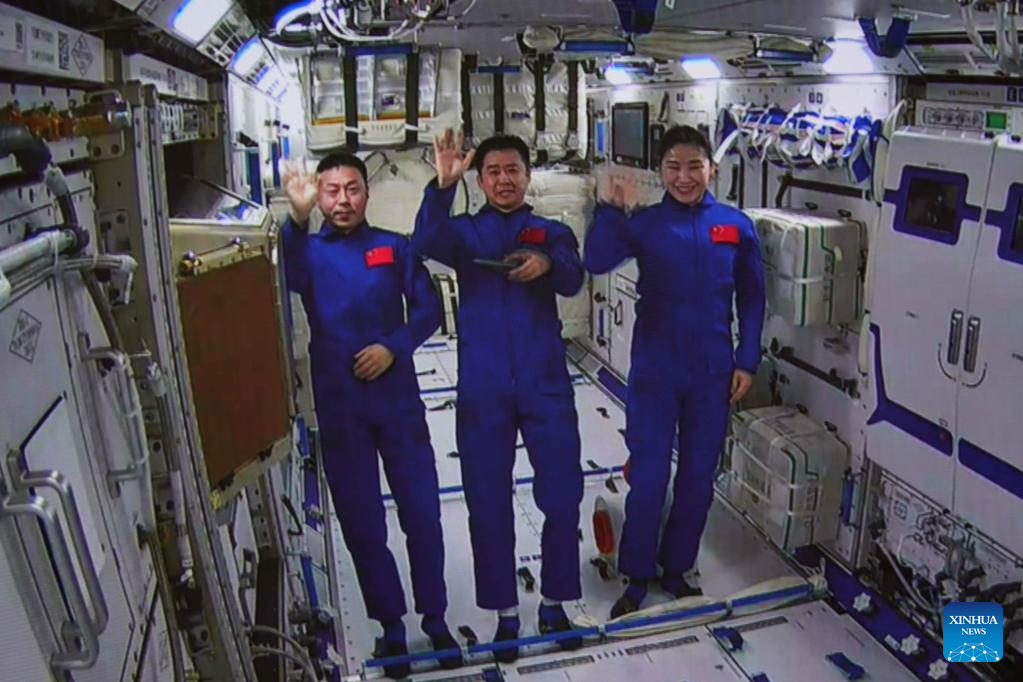
In 2025, six zebrafish are set to journey to China's space station, assisting scientists in exploring how the space environment impacts the muscle and skeletal development of vertebrates. This research is expected to bolster long-term human survival in space and pave the way for interplanetary habitation.
A "fishbowl" in China's Tiangong Space Station will house six zebrafish and six grams of Ceratophyllum this year, according to Wang Gaohong from the Institute of Hydrobiology of the Chinese Academy of Sciences, who spoke to Xinhua on Monday. The study will focus on the impact of microgravity on the proteins in the zebrafish's bones and muscles. Once the experiment comes to a close, the fish will be frozen and brought back to Earth for further analysis.
In April 2024, a container with four zebrafish and four grams of Ceratophyllum was sent to the space station by Shenzhou-18 manned spaceship, forming China's first space-based self-sustaining aquatic ecosystem. This space aquatic ecosystem ran smoothly for about 43 days, setting a global record for the longest operational duration of such a system.
"The typical lifespan of zebrafish is two to three years. Therefore, their 43 days in space is equivalent to a human spending three to four years there," said Wang, who is in charge of the experiment.
The "Tiangong fishbowl" currently in development has a volume of only 1.2 liters, equivalent to two bottles of drinking water. Conducting long-term breeding experiments for zebrafish in such a small space presents various challenges. To address these issues, researchers dedicated three to four years on Earth to preparation and planning.
Just as astronauts face rigorous selection, so do the zebrafish bound for space. "The four zebrafish that entered the space station were selected from 200 candidates. They need to be adults in good health, and they also need to have a stable temperament and be compatible with one another," Wang said.
When the first images from the "Tiangong fishbowl" were transmitted back to Earth, Wang was elated. "We left a bit of air in the container. In space, it mixed with the water and created beautiful bubbles, resembling a crystal palace."
During the 43-day space experiment, Wang and fellow scientists monitored the "Tiangong fishbowl" around the clock from Earth.
They observed that the Ceratophyllum and zebrafish initially showed instability in various metrics but gradually self-regulated and adapted to each other. The Ceratophyllum maintained robust photosynthetic activity throughout its stay in orbit.
Initially, the zebrafish displayed abnormal spatial behaviors, such as upside-down swimming and circling. "Like humans, fish cannot discern up from down in microgravity, leading to disoriented movement," Wang explained.
The water samples collected from this space aquatic ecosystem returned to Earth with the Shenzhou-18 spacecraft in November 2024, and scientists are now delving deeper into their analysis.
Zebrafish share a high genomic similarity with humans. They are small, reproduce rapidly, and have a short development cycle, making them a prime model organism in life sciences. They're widely utilized in research spanning various fields, including hematopoiesis, cardiovascular health, kidney, skeletal systems, tumor and epilepsy.
Microgravity in space can induce a range of pathophysiological phenomena in humans, such as cardiovascular issues, weakened immunity, bone loss, muscle atrophy, and hormona imbalances. Understanding these effects is a key scientific endeavor in space biology. This study will enhance our collective understanding of how the space environment impacts genes, cells, and overall life.
This study has laid a strong foundation for research on astronaut health using zebrafish as a model, Wang said. "Looking ahead, as humans contemplate leaving Earth for other planets, sustainable life support is crucial. Aquatic creatures like fish and shrimp, with their high feed conversion rates, could be an ideal source of protein."
Quelle: SN
----
Update: 21.01.2025
.
China unveils logos for three space missions in 2025
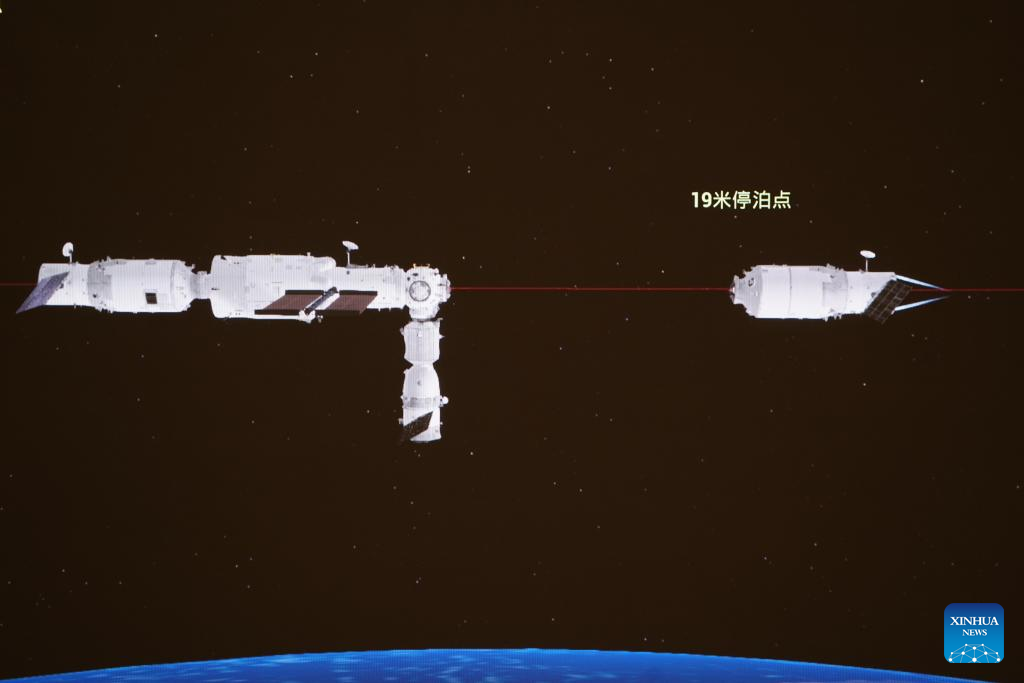
The China Manned Space Agency (CMSA) unveiled logos on Monday for three key missions in China's manned space program this year: the launches of the crewed spaceships Shenzhou-20 and Shenzhou-21, and the cargo craft Tianzhou-9.
These new logos symbolize the courage and determination of Chinese astronauts and their commitment to exploring the mysteries of the universe, the CMSA said.
A logo has been designed for each manned mission since China's first manned spaceflight Shenzhou-5 in 2003. The CMSA has opened logo solicitation for the country's space missions since 2023 and has maintained this approach since then.
According to the CMSA, crews for the Shenzhou-20 and Shenzhou-21 missions will consist of three astronauts each. Shenzhou-20 is set to dock with the radial port of the space station's core module, while Shenzhou-21 will dock with its front port.
The main tasks of the astronauts will include extravehicular activities, cargo outbound deliveries via the station's cargo airlock module, and the conducting of space science experiments and technology tests.
In the second half of 2025, China plans to launch the Tianzhou-9 cargo spacecraft from the Wenchang Space Launch Site in its southern Hainan Province. This mission will deliver supplies for astronauts, propellants to ensure the space station's operation, various types of payloads, and more.
China's manned space station project has entered its application and development stage -- with two manned spacecraft missions and one to two cargo missions planned annually.
Quelle: Xinhua
